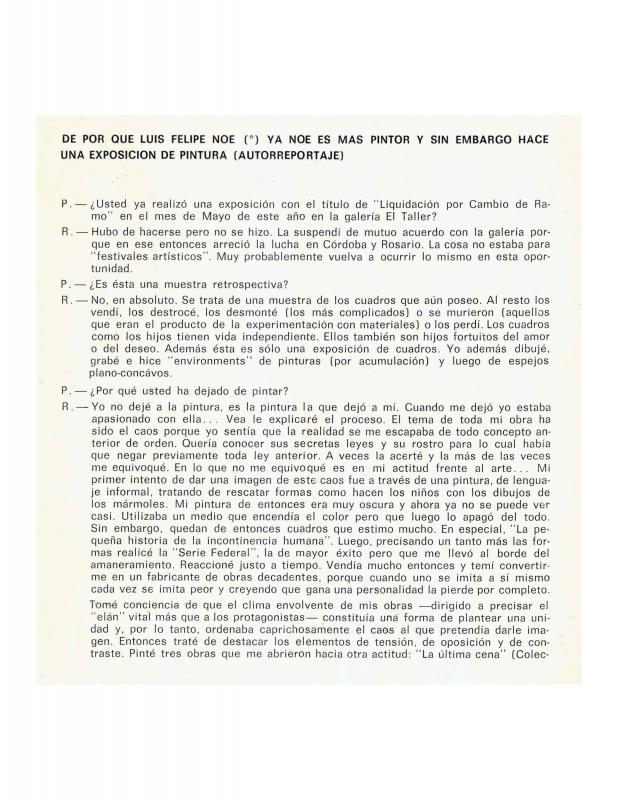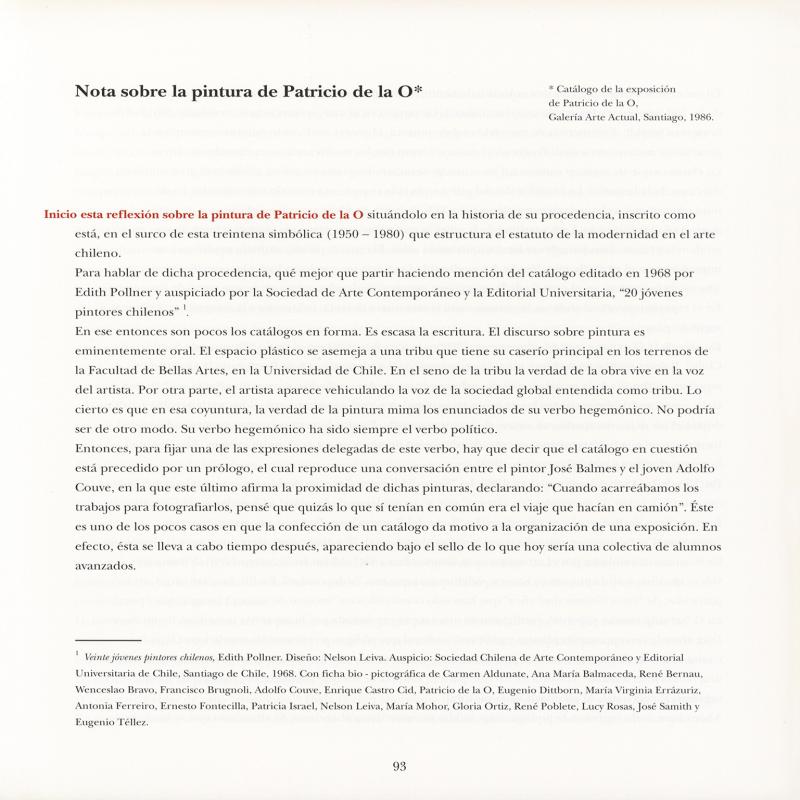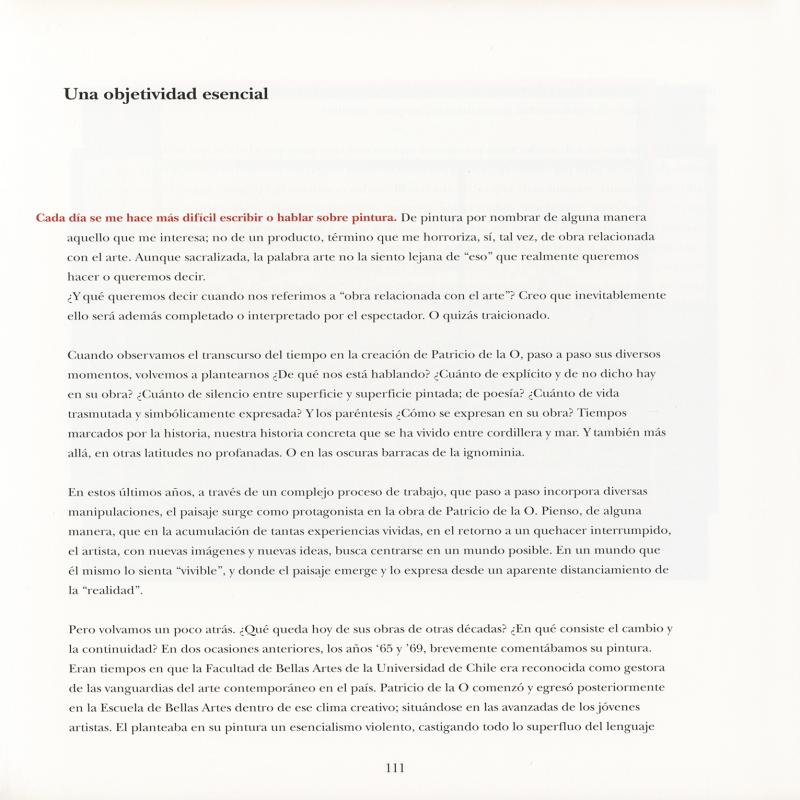This essay, “La manufactura del paisaje,” was written by the art critic and curator Justo Pastor Mellado (b. 1949) for an exhibition of paintings produced by Patricio de la O (b. 1946) between 1987 and 1989; the event was held at the Galería Arte Actual in Santiago, Chile.
Trained at the Escuela de Bellas Artes de la Universidad de Chile in the early 1960s, Patricio de la O studied under the painters Iván Vial (1928–2016), Reinaldo Villaseñor (1925–1994), José Balmes (1927–2016), and Eduardo Martínez Bonati (b. 1930); the latter were also members of the Grupo Signo. During his time at university, he produced graphic art for advertising campaigns and for political propaganda pieces as a sideline to his art production. After the 1973 coup d’état he was imprisoned before going into exile. From 1974 to 1978 he lived in Buenos Aires, where he worked as a graphic artist for Editorial IARA and at the Diario La Opinión (Jacobo Timerman’s newspaper), and as a painter at the well-known artist Luis Felipe Noé’s studio. [On the subject of Noé’s work, see the following in the ICAA Digital Archive: “De por qué Luis Felipe Noé (*) ya no es más pintor y sin embargo hace una exposición de pintura (autorreportaje)” (doc. no. 740623).]
In 1980, De la O once again exhibited his work in Chile at Serie del regreso, where he showed paintings and collages he’d produced between 1978 and 1980. The art historian Milan Ivelic (b. 1935) described this series as a synthesis of the artist’s experiences during the 1970s and 1980s; hence the “return” in the title of the exhibit referred to his return to the country as well as to the craft. At that time De la O developed a close working relationship with Pastor Mellado, who wrote about his work on more than one occasion. They did a series of interviews they planned to publish, but the project never came to fruition.
At a time when people were talking about conceptual art and neo-expressionist painting, De la O was focused on a rational, systematic sort of painting that retained a certain classicism, according to Pastor Mellado. The art critic claims that this rational, systematic approach goes against the subjective and primitivist “I” that was so prevalent in the painting scene in the 1980s among a generation of young painters. De la O’s painting essentially suggests a solitary work ethic that was focused on individual exploration. [For more information about his painting, see the following in the ICAA Digital Archive: “Nota sobre la pintura de Patricio de la O” (doc. No. 756787) by Mellado and “Una objetividad esencial” (doc. no. 756798) by Balmes.]



